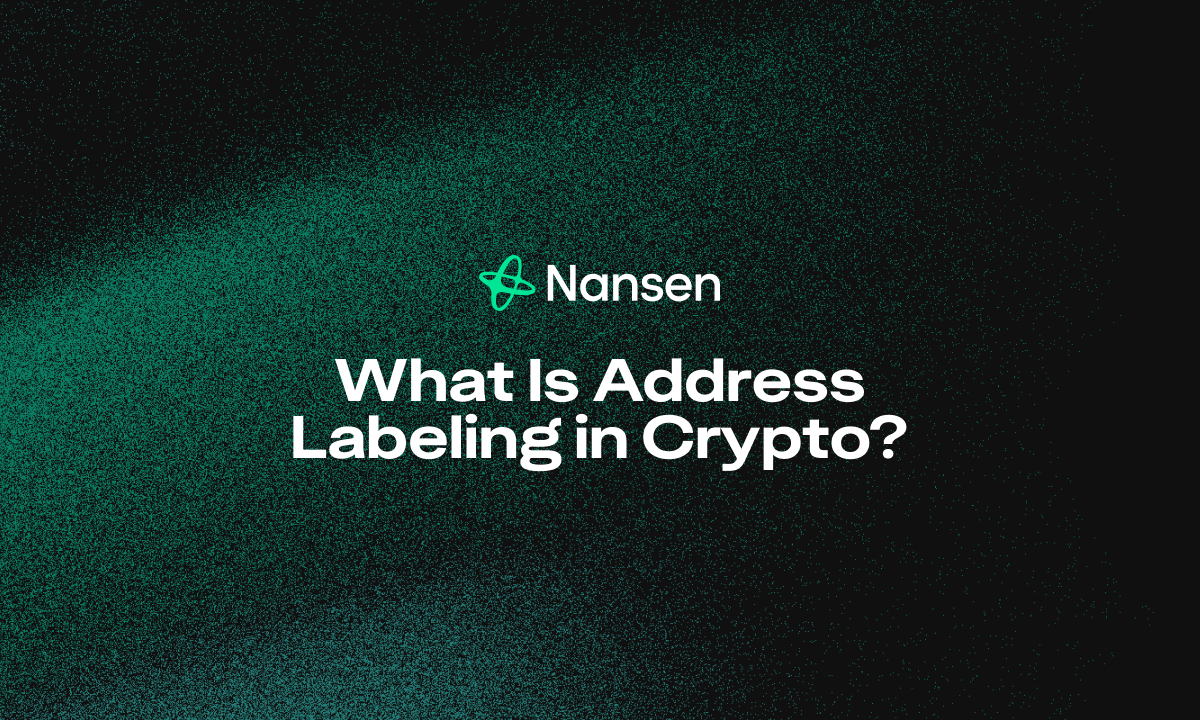What Is Address Labeling in Crypto?
Address labeling is the process of identifying and tagging blockchain addresses with meaningful information about their owners or purposes.** Instead of seeing just a string of characters like "0x7a250d5630B4cF539739dF2C5dAcb4c659F2488D," you might see "Uniswap V2 Router" or "Binance Hot Wallet."
This process transforms anonymous blockchain data into actionable intelligence by connecting addresses to real-world entities, services, or individuals.
Think of it like caller ID for crypto transactions. Without it, you're receiving calls from unknown numbers. With it, you know exactly who's moving funds around.
How Address Labeling Works
Address labeling systems typically build their databases through:
- Direct verification: When entities publicly claim their addresses
- Transaction pattern analysis: Identifying behavioral signatures
- Clustering techniques: Linking addresses that likely belong to the same entity
- Cross-referencing public information: Matching on-chain activity with off-chain events
These techniques create an address label database that grows more valuable over time as more connections are established through on-chain identity mapping.
Why Address Labeling Matters for Crypto Investors
For investors in the 24-35 age bracket, understanding address labeling offers several advantages:
1. Better Risk Assessment
By identifying the major players in a token's ecosystem, you can spot potential red flags. For example, if 80% of a token is held by three unknown wallets, that's a centralization risk you might want to avoid.
2. Market Intelligence
When large amounts of crypto move from exchange wallets to private wallets (or vice versa), it often signals institutional activity that could impact prices. Address categorization helps you interpret these movements.
3. Scam Protection
Address labeling can help you verify if you're interacting with legitimate smart contracts and services. Before connecting your wallet to a DeFi protocol, you can check if its addresses are properly labeled and recognized.
4. Tax Compliance
For those managing crypto taxes, transaction labeling makes it easier to categorize transfers between your own wallets versus taxable events like trades or income.
Real-World Applications of Address Labeling
Address labeling isn't just theoretical — it has practical applications across the crypto landscape:
- Investment Research: Firms analyze wallet tags to track institutional money movements
- Compliance: Exchanges use address labeling APIs to screen transactions for suspicious activity
- Security: Investigating hacks by tracking stolen funds through address metadata
- Market Analysis: Examining wallet behaviors during price volatility to understand market dynamics
One investor I know uses address tag analytics to track when founding team members of a project start moving tokens—often an early warning sign of a potential sell-off.
Popular Tools for Address Labeling
If you're looking to leverage address labeling in your investment strategy, several platforms offer this capability:
- Chainalysis - Enterprise-grade blockchain analysis with extensive entity labeling
- Nansen - Investor-focused platform with detailed wallet categorization
- CipherTrace - Compliance-focused address labeling tools
Many of these services provide access through an address labeling API for those building more sophisticated analysis tools.
The Privacy Question
Can address labeling compromise user privacy on blockchain?
This is a common concern, but it's important to understand that address labeling doesn't "deanonymize" what isn't already public. Blockchain transactions are already transparent by design — labeling just makes this existing public information more understandable.
That said, there are legitimate privacy considerations:
- Labels can sometimes be incorrect or misleading
- Some users may not want their addresses associated with their identities
- Over-labeling could potentially reduce the practical privacy blockchain offers
The crypto community continues to debate the right balance between transparency and privacy as label enrichment blockchain technologies advance.
Getting Started With Address Labeling
If you're new to using address labels in your crypto research:
- Start with free tools like block explorers that include basic labels
- Learn to interpret common labels (exchanges, miners, founders, etc.)
- Consider how address movements might affect your investment thesis
- Look for unusual patterns in labeled wallet behaviors
Remember: Address labels provide clues, not certainties. They're most powerful when combined with other forms of analysis.
Final Thoughts
Address labeling transforms the blockchain from a ledger of anonymous transactions into a network of identifiable entities and relationships. For investors, this visibility is invaluable for making informed decisions based on what's actually happening onchain.
As crypto markets mature, the ability to interpret on-chain data through effective address labeling will likely become an essential skill for serious investors. Those who master this aspect of crypto intelligence will have a significant edge in understanding market movements before they're reflected in prices.
The next time you're researching a crypto project, don't just look at the price chart—check who's holding the tokens, how they're moving, and what that might tell you about where things are headed.
Disclaimer: This article is for informational purposes only and does not constitute investment advice. Always conduct your own research before making investment decisions.




